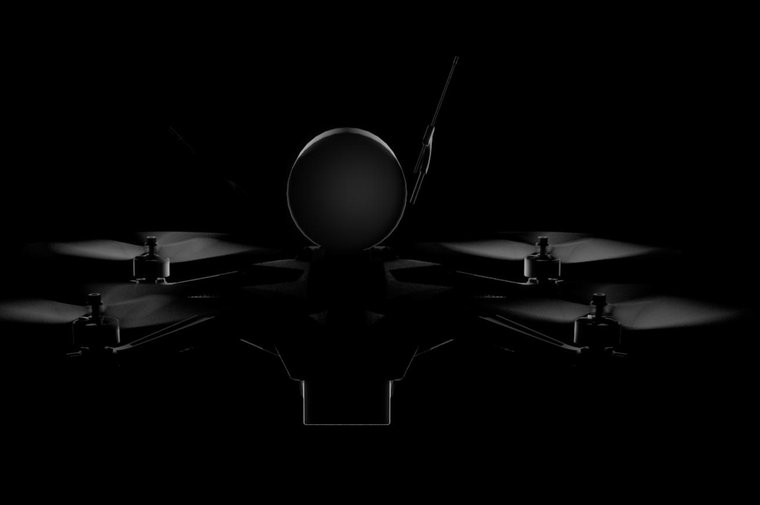SOF Week 2025: PDW unveils attritable FPV drone for SOF operations at scale
Details
More Products & Services
Products & Services
Defence Insight
Shephard Media
Some of the things people like you use Defence Insight for:
- Total addressable market sizing ($)
- Competitor analysis
- Cost analysis
- Market forecasting
- Growth identification
- Increasing closing ratio
- Increasing closing order value
- Estimating product potential
- Calculating sales forecasting
- Supply and demand analysis
- Total addressable market sizing ($)
- Competitor analysis
- Cost analysis
- Market forecasting
- Growth identification
- Increasing closing ratio
- Increasing closing order value
- Estimating product potential
- Calculating sales forecasting
- Supply and demand analysis
Shephard Plus Update
Shephard Media
Shephard Plus is updating in June 2018 with rich new capabilities, and is now one of the most cost-effective and valuable aerospace and defence market intell...
Military Unmanned Systems Handbook
Shephard Media
The Military Unmanned Systems Handbook (Digital Download) is an international guide to the military UV industry and provides detailed information on air, ground and sea (surface & sub-sea) vehicles as well as subsystems. What's included: Unencrypted 390+ page PDF of equipment and supplier information Market summary
Description
Responding to calls from special operations forces (SOF) for attritable and affordable uncrewed systems at scale, UAV specialist PDW has used the SOF Week conference in Tampa, Florida to unveil a cost-effective ‘First Person View' drone.
The Attritable Multirotor (AM-FPV) is a quad-rotor design capable of supporting intelligence-gathering as well as precision strike missions, according to a company statement published on 6 May.
FPV one-way attack drones continue to emerge as a critical capability for the Armed Forces of Ukraine (AFU). In March, the Ukrainian MoD said uncrewed aerial systems accounted for more than 20 percent of strike missions in February this year.
In February, the MoD also announced it intended to purchase 4.5m FPV drones throughout 2025 - an increase of 3m over the number procured in 2024, according to MoD figures.
Currently developed to TRL 7, the AM-FPV is available in 5-, 7- or 10-inch frame sizes and capable of carrying up to 1.3kg, 1.8kg or 2.2kg respectively.
Flight endurance can range from 11 minutes up to 35 minutes, depending upon airframe size and payloads carried. Maximum range is 20km, although this can be extended to 30km if a larger UAV is used as a rebroadcasting station.
The AM-FPV is guided by infrared and LED illumination, enabling an operator to fly the drone during the day, night, and even in contested environments.
Speaking to Shephard ahead of SOF Week, PDW's CEO Ryan Gury described how the war in Ukraine continued to highlight requirement for easy and rapidly assembled and deployed drones.
According to Gury, the AM-FPV can be assembled in less than two minutes, with ‘swappable arms' and a universal mount capable of accepting a variety of payloads, including anti-personnel and anti-materiel effects.
‘To put it simply, our customers want quality, hardened, reliable systems at scale. It's our duty to ensure we exceed these requirements. We've continually refined and flown our FPV to its limits to ensure failure isn't an option when it gets in the hands of our warfighters,' Gury explained, describing the AM-FPV as an ‘evolution' of drone racing technologies.
Suggesting drones had become the ‘new form of artillery', Gury went onto explain how the war in Ukraine continued to demonstrate how cost-effective, weaponised drones manufactured at scale can ‘own' the battlefield.
‘Militaries around the world are now demanding this capability [and] we're gearing up to manufacture the attritable weapons system at scale and at a fraction of the cost of comparable systems. This will fill a critical gap our operators require at the front lines to achieve successful multi-domain operations.'
Gury confirmed to Shephard that the AM-FPV is already under contract with undisclosed customers in the US Department of Defense. Shipping of systems is scheduled to begin in July with ‘thousands' of airframes delivered by the end of the year, he said.
Gury also said PDW has received undisclosed levels in funding for the Defense Innovation Unit's Replicator programme, which is designed to deliver huge amounts of affordable drones to customers.
He also said PDW intends to pursue the US Army's Purpose Built Attritable System (PBAS) requirement for FPV drones, scheduled to be delivered to the customer in 2026 and beyond.
The Attritable Multirotor (AM-FPV) is a quad-rotor design capable of supporting intelligence-gathering as well as precision strike missions, according to a company statement published on 6 May.
FPV one-way attack drones continue to emerge as a critical capability for the Armed Forces of Ukraine (AFU). In March, the Ukrainian MoD said uncrewed aerial systems accounted for more than 20 percent of strike missions in February this year.
In February, the MoD also announced it intended to purchase 4.5m FPV drones throughout 2025 - an increase of 3m over the number procured in 2024, according to MoD figures.
Currently developed to TRL 7, the AM-FPV is available in 5-, 7- or 10-inch frame sizes and capable of carrying up to 1.3kg, 1.8kg or 2.2kg respectively.
Flight endurance can range from 11 minutes up to 35 minutes, depending upon airframe size and payloads carried. Maximum range is 20km, although this can be extended to 30km if a larger UAV is used as a rebroadcasting station.
The AM-FPV is guided by infrared and LED illumination, enabling an operator to fly the drone during the day, night, and even in contested environments.
Speaking to Shephard ahead of SOF Week, PDW's CEO Ryan Gury described how the war in Ukraine continued to highlight requirement for easy and rapidly assembled and deployed drones.
According to Gury, the AM-FPV can be assembled in less than two minutes, with ‘swappable arms' and a universal mount capable of accepting a variety of payloads, including anti-personnel and anti-materiel effects.
‘To put it simply, our customers want quality, hardened, reliable systems at scale. It's our duty to ensure we exceed these requirements. We've continually refined and flown our FPV to its limits to ensure failure isn't an option when it gets in the hands of our warfighters,' Gury explained, describing the AM-FPV as an ‘evolution' of drone racing technologies.
Suggesting drones had become the ‘new form of artillery', Gury went onto explain how the war in Ukraine continued to demonstrate how cost-effective, weaponised drones manufactured at scale can ‘own' the battlefield.
‘Militaries around the world are now demanding this capability [and] we're gearing up to manufacture the attritable weapons system at scale and at a fraction of the cost of comparable systems. This will fill a critical gap our operators require at the front lines to achieve successful multi-domain operations.'
Gury confirmed to Shephard that the AM-FPV is already under contract with undisclosed customers in the US Department of Defense. Shipping of systems is scheduled to begin in July with ‘thousands' of airframes delivered by the end of the year, he said.
Gury also said PDW has received undisclosed levels in funding for the Defense Innovation Unit's Replicator programme, which is designed to deliver huge amounts of affordable drones to customers.
He also said PDW intends to pursue the US Army's Purpose Built Attritable System (PBAS) requirement for FPV drones, scheduled to be delivered to the customer in 2026 and beyond.

Share
Recent Chats
Share via email
Future: handle WhatsApp here
Future: handle LinkedIn here
Future: handle Twitter here
SUBMENU HERE
Share via Chat
Copy Link



